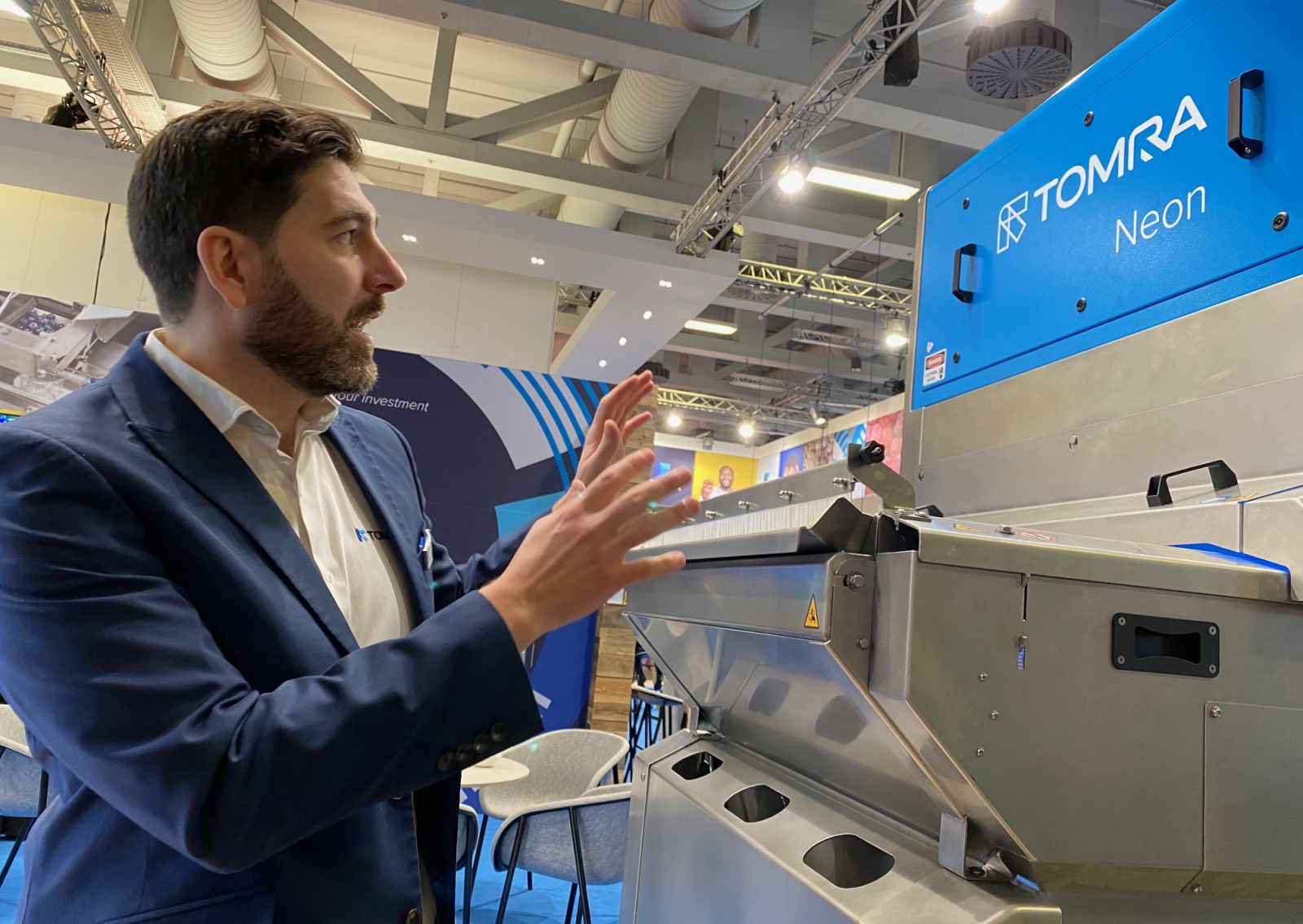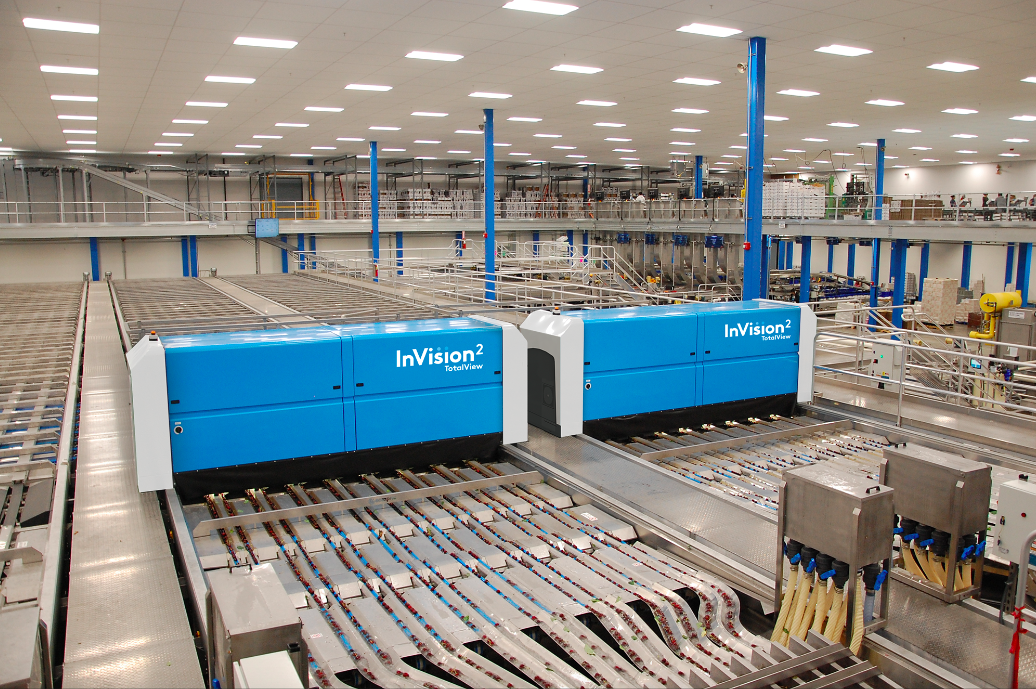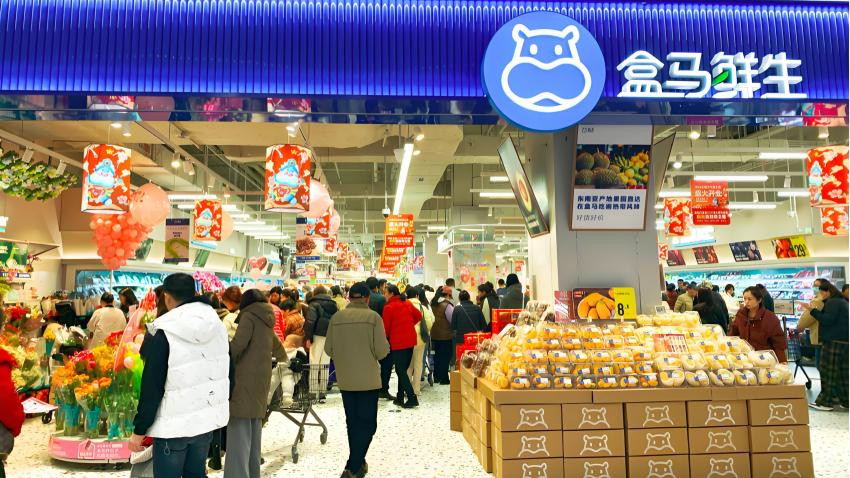You are here
Back to top[Press Release] TOMRA Food Unveils New Structure and AI-Powered Solutions

This content has been published as provided by its author. It has only been modified from its original version to follow Produce Report editorial guidelines and for necessary website formatting.
TOMRA Food has unveiled its new, more agile and focused organizational structure, showcased its sorting, grading and packing solutions, and launched three new AI-powered sorting and grading solutions.
The announcements were made at a press conference held at the Fruit Logistica exhibition in Berlin, Germany, by Harald Henriksen, executive vice president and head of TOMRA Food, and Karel Strubbe, EMEA regional director of TOMRA Food.
TOMRA Food’s new structure creates a more agile and responsive organization, closer to its customers, with greater capacity for innovating and bringing effective solutions to the market. To this end, it is adopting a new, regional structure consisting of three areas: EMEA, Americas and APAC. Within each area, it is merging its TOMRA Processed Food and TOMRA Fresh Food business areas into one TOMRA Food team. The final element of the new structure is the creation of a new central hub that brings together R&D, product development and operations, increasing TOMRA Food’s operational efficiency and innovation speed.

Henriksen explained: “Throughout its history, TOMRA Food has shown its ability to adapt and innovate to provide the solutions our customers really need. That’s what we are doing with our new organization, which will benefit them in different ways. The regional approach will allow us to operate as a local partner, having a more direct dialogue with our customers and responding swiftly to their very diverse needs. Unifying our two business areas into one TOMRA Food team means that we can capitalize on the best practices from each to work more effectively and deliver top-tier solutions and services. Finally, by centralizing our R&D and operations into a dedicated unit, we will be able to leverage the collective expertise and efforts of our entire team, boosting our ability to innovate and bring more and better solutions to our customers — and lead the resource revolution with them.”
TOMRA Food launched three solutions that demonstrate how artificial intelligence is changing food processing. The first is TOMRA Neon, a new blueberry pre-grader that uses AI modeling to detect clusters with unrivaled accuracy. A compact, durable and easy-to-clean machine, it will be a valuable addition to blueberry processing and packing operations. Extensive validation tests have shown that TOMRA Neon removes more than 95% of clusters and over 90% of red and green berries to optimize the optical grader’s efficiency. With its entry into the market, TOMRA now offers a suite of solutions that integrates its Harvest Cleaner, Small Fruit Eliminator, TOMRA Neon and KATO260 for easy and effective processing of machine-harvested blueberries.

Also introduced at Fruit Logistica was the new-generation Spectrim X grading platform featuring its LUCAi deep learning technology for apples. This intelligent optical sorting and grading solution, equipped with LUCAi Engine Software, computing hardware and pre-trained models meets customers’ demand for greater productivity with unparalleled grading precision, higher yields, minimal fruit loss and reduced operational costs.
TOMRA Food also unveiled TOMRA LUCAi for its InVision2 grading platform for cherries. TOMRA’s deep learning technology maximizes pack-out results and minimizes fruit loss. It detects with extreme accuracy edge cracks, pacman cherries (half cherries), open sutures, cosmetic blemishes and stem pulls, and ensures improved spur detection as well as cracks and defects around the stem. Customers will benefit from enhanced pack quality and consistency with minimized waste and premium yields.

Sebastian Stoof, TOMRA Food’s vice president and head of customer value, gave a presentation on Fruit Logistica’s Tech Stage. He spoke about developments in AI technology in the food industry and how it is used to solve challenging problems in food sorting.
Stoof explained that, for the successful application of AI in food sorting, several critical conditions must be met. They include high-quality imaging for training and operations, expert industry knowledge, expertise in deep learning technology, and a suitable organizational setup that allows for scale.
Stoof concluded with remarks about the way the introduction of AI technology in food sorting is shifting customers’ expectations of sorting precision, adaptability of technology, the skillset of operators and the support they receive from their technology providers.
Images: © 2024 Produce Report (main image and body images one and two), TOMRA Food (body image three)
This article is also available in Chinese. Read the Chinese article.














Add new comment